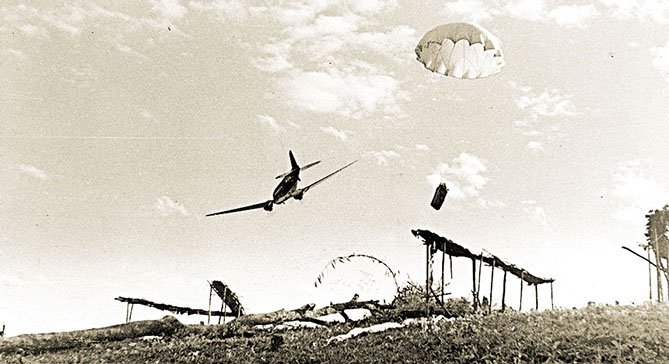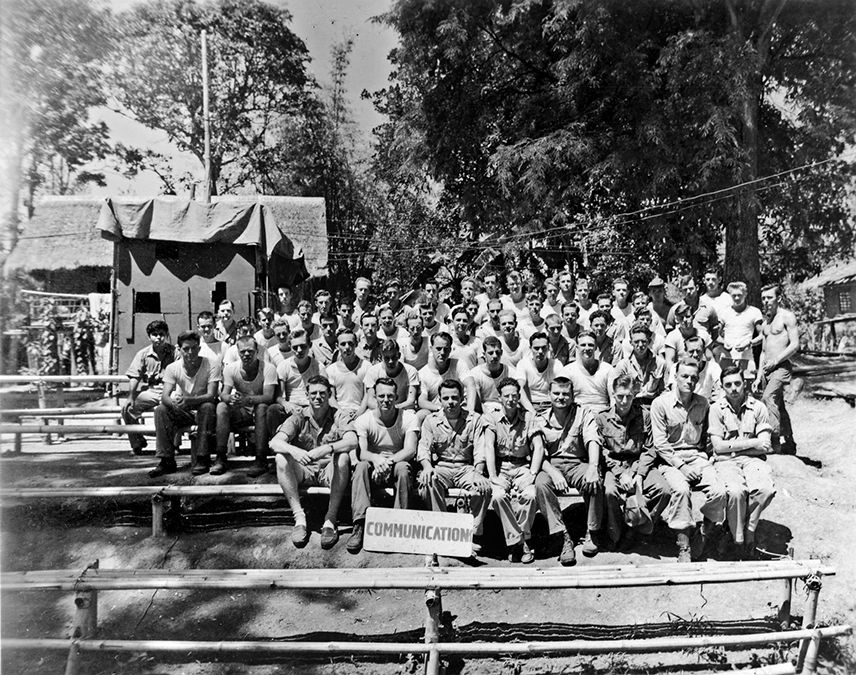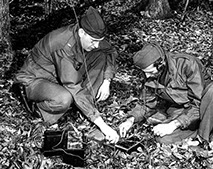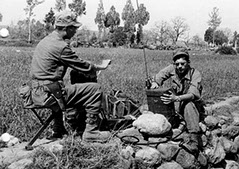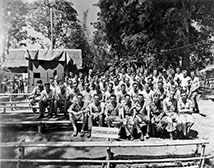The mission of the Communications Branch was to recruit and train military and civilian radio operators at OSS training camps and to develop radios and communications devices tailored to specific assignments. The branch had its genesis in the COI period, but did not become a separate OSS entity until 22 September 1942. Mastering the technical aspects of OSS-unique clandestine communications equipment, developing training programs focused on operating, maintaining, and repairing this equipment in the field, and supporting specific needs of the operational branches required an element specifically dedicated to OSS communications requirements.
The Communications Branch trained personnel in a ten-week program that included radio maintenance, Morse code, cryptography, and communications procedures and security. OSS communicators were trained at OSS Areas C [Prince William Forest Park, VA], M [Camp McDowell-Napierville, IL], and on Catalina Island, CA. Trainees at these camps were Communications Branch recruits and designated as radio operators for the SI, SO, and OG branches. The Communications Branch was also responsible for providing communications and radio familiarization training at other OSS training camps operated by the OSS Schools and Training Branch. Subsections of the Communications Branch researched and developed mission-specific communications devices, such as the SSTR-1 Transmitter-Receiver. The SSTR-1 was popularly known as the ‘suitcase’ radio because of its most common method of concealment. Another item was the SSTC-502/SSTR-6, popularly known as the ‘Joan-Eleanor.’ The SSTC-502 (‘Joan’) was a 3 1/2 pound hand held radio that ran on compact long-life batteries, eliminating the need for a heavy charger. The SSTR-6 (‘Eleanor’) was emplaced in an aircraft. This revolutionary system, developed late in 1944, allowed the ground operator to talk with OSS personnel in an aircraft thousands of feet up and miles away from their location, greatly reducing the chances of detection.
The communicators were the ‘unsung’ members of the clandestine service, providing critical command and control nodes. They worked in every theater that the OSS operated in and operated the radios for groups and teams. Communications to elements behind enemy lines was critical. Radios were used to arrange resupply, coordinate field operations, and transmit time-sensitive intelligence. Radio personnel staffed twenty-six OSS message centers in fifteen countries. These centers served as the OSS information clearing houses, receiving messages from the field teams, relaying them to commanders and OSS headquarters, and issued orders and instructions to groups in the field. U.S. Army Special Forces realized the critical need for communications specialists with advanced training at all levels—ODA, ODB, ODC, and the Group. The SF communications sergeant, MOS 18 Echo designation, fills that need.
